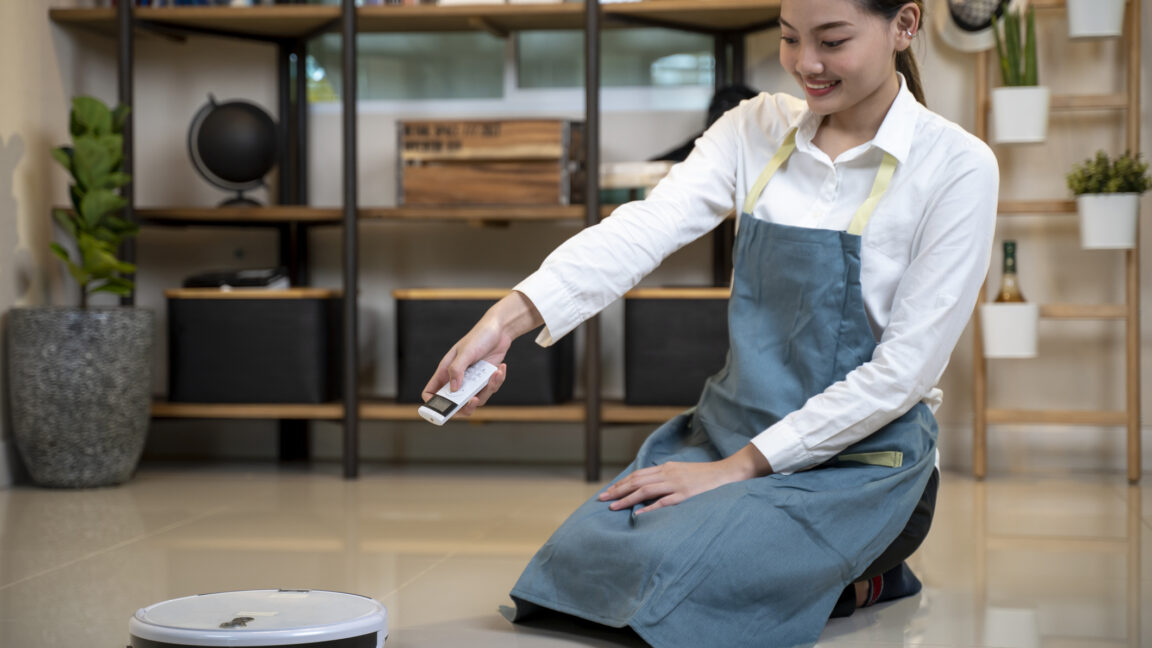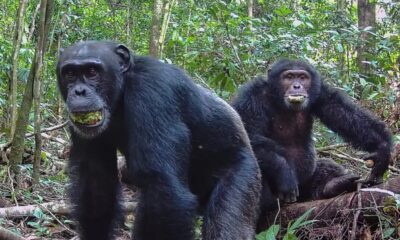Science
Robots Evolve with New ‘Metabolism’ Concept for Self-Improvement

Researchers at Columbia University have introduced a groundbreaking concept in robotics, demonstrating a machine capable of consuming other robots to enhance its abilities. Led by developmental robotics expert Philippe Wyder, this innovative project showcases a rudimentary form of what the team calls “metabolism.” The research, published in Science Advances, highlights the potential for robots not only to grow but to become more capable over time.
The concept of robotic metabolism integrates various ideas from artificial life and modular robotics. Wyder explains that the approach is inspired by biological processes. Traditionally, efforts to improve robots have centered on mimicking biological intelligence. Wyder argues that it is more beneficial to replicate the methods of evolution rather than merely its outcomes.
Combining Concepts for Robotic Growth
The team’s work merges concepts from artificial life, modular robotics, and survivability-oriented design. Wyder references the pioneering efforts of Daniela Rus and Mark Yim at Carnegie Mellon University, who explored reconfigurable machines in the 1990s. Another foundational idea comes from Magnus Egerstedt, who advocates for a shift toward designs that prioritize survival, as outlined in his book, “Robot Ecology.”
Wyder’s team built a basic robotic module, named the Truss Link, which measures 16 centimeters and contains components such as batteries, electronic controllers, and servomotors. These modules can connect to each other using permanent magnets, allowing them to form complex structures. The initial phase of their experiment involved placing several Truss Links in an environment with terrain features and directing them to create various formations.
As they connected, the robots developed capabilities beyond simple movement. A single Truss Link could only move in a straight line, while a triangle could turn left and right. More advanced structures, such as a tetrahedron with a ratchet, could assist other robots in forming complex shapes, showcasing the potential for collaborative growth.
Self-Assembly and Future Applications
Wyder’s team sought to understand whether the Truss Links could autonomously assemble without human guidance. They simulated environments where six randomly moving Truss Links could interact. In over 2,000 trials lasting 20 minutes each, the modules showed a 64 percent likelihood of forming two three-pointed star shapes and nearly 45 percent of creating a diamond with a tail. Notably, these configurations could repair themselves and replace malfunctioning components.
While the robots exhibit characteristics akin to metabolism, such as growth and reconfiguration, the term “metabolism” is debated. Traditionally defined, metabolism involves extracting energy and transforming materials. The Truss Links rely on compatible prefabricated modules rather than consuming materials from their environment. Wyder acknowledges that the current research does not offer a practical application, emphasizing that the focus is on developing a research platform.
Wyder envisions expanding the variety of modules used in future experiments, aiming to mimic the diversity found in biological systems. Life utilizes around 20 different amino acids, and the introduction of varied sensors could enhance the Truss Links’ functionality.
Yet, a significant challenge remains: the robots lack a defined purpose. Biological organisms evolve to survive in response to environmental pressures. Egerstedt’s work suggests that robots should similarly operate under “survivability constraints.” Wyder agrees but stresses that the analogy should not be overstretched. He envisions a future where robots are given specific objectives, such as building a lunar colony.
In this scenario, small units would initially disperse to explore, later assembling into larger structures capable of utilizing their smaller counterparts. Wyder believes that such a robotic platform would adapt to unforeseen challenges more effectively than biological organisms, offering a new frontier in robotics.
This research not only pushes the boundaries of robotic capabilities but also invites broader discussions about the future of machine intelligence and autonomy. As Wyder and his team continue to refine their concepts, the potential applications of robotic metabolism could redefine our understanding of machine evolution and self-sustainability.
-

 Politics4 weeks ago
Politics4 weeks agoSecwepemc First Nation Seeks Aboriginal Title Over Kamloops Area
-

 World5 months ago
World5 months agoScientists Unearth Ancient Antarctic Ice to Unlock Climate Secrets
-

 Entertainment5 months ago
Entertainment5 months agoTrump and McCormick to Announce $70 Billion Energy Investments
-

 Science5 months ago
Science5 months agoFour Astronauts Return to Earth After International Space Station Mission
-

 Lifestyle5 months ago
Lifestyle5 months agoTransLink Launches Food Truck Program to Boost Revenue in Vancouver
-

 Technology3 months ago
Technology3 months agoApple Notes Enhances Functionality with Markdown Support in macOS 26
-

 Lifestyle3 months ago
Lifestyle3 months agoManitoba’s Burger Champion Shines Again Amid Dining Innovations
-

 Top Stories2 months ago
Top Stories2 months agoUrgent Update: Fatal Crash on Highway 99 Claims Life of Pitt Meadows Man
-

 Politics4 months ago
Politics4 months agoUkrainian Tennis Star Elina Svitolina Faces Death Threats Online
-

 Sports5 months ago
Sports5 months agoSearch Underway for Missing Hunter Amid Hokkaido Bear Emergency
-

 Politics5 months ago
Politics5 months agoCarney Engages First Nations Leaders at Development Law Summit
-

 Technology5 months ago
Technology5 months agoFrosthaven Launches Early Access on July 31, 2025















